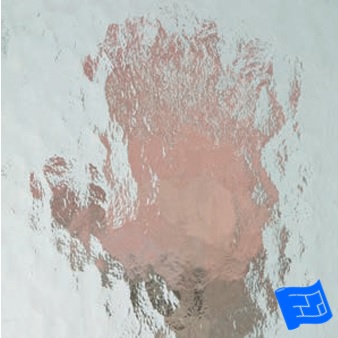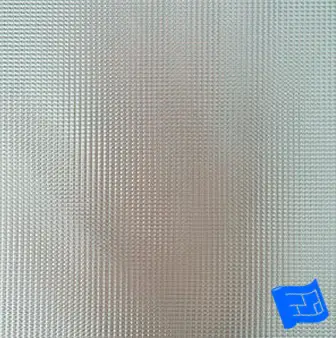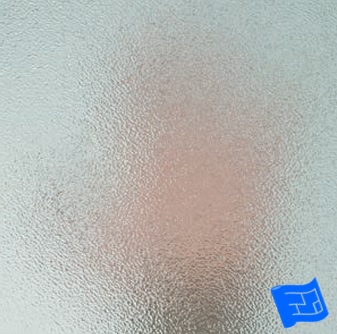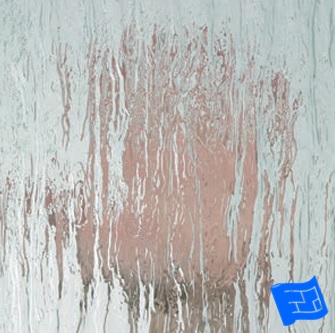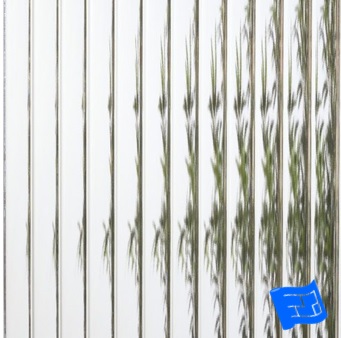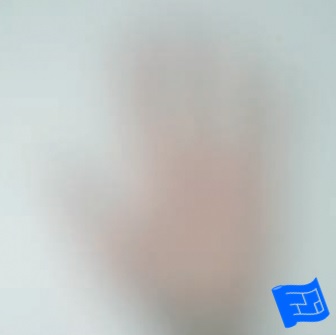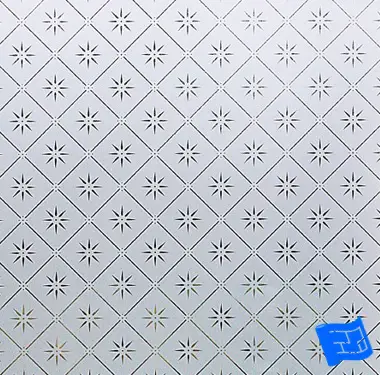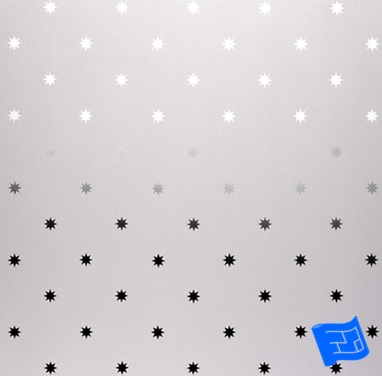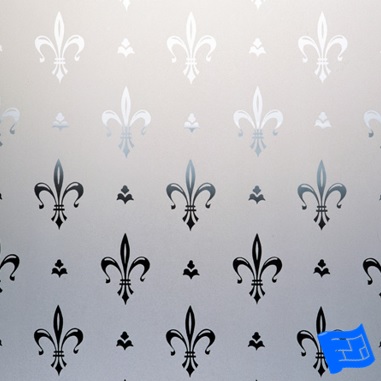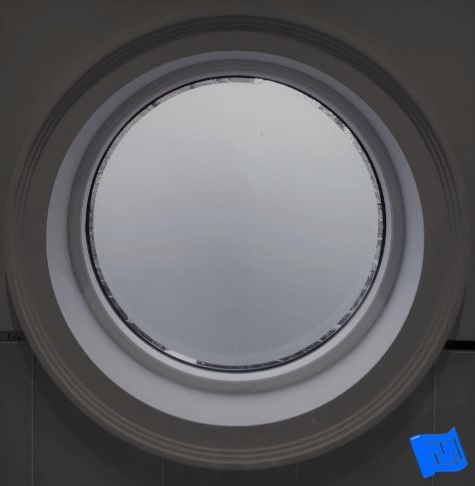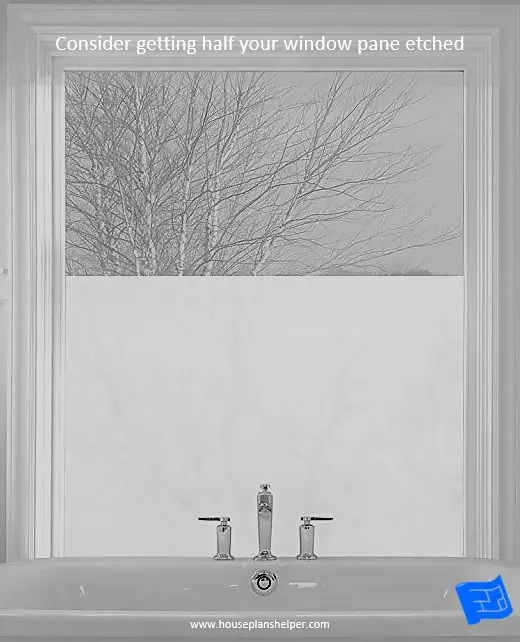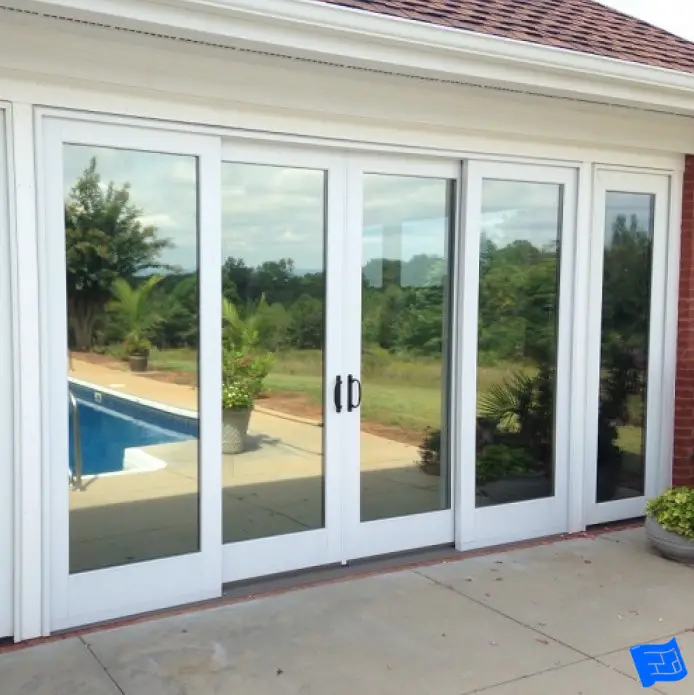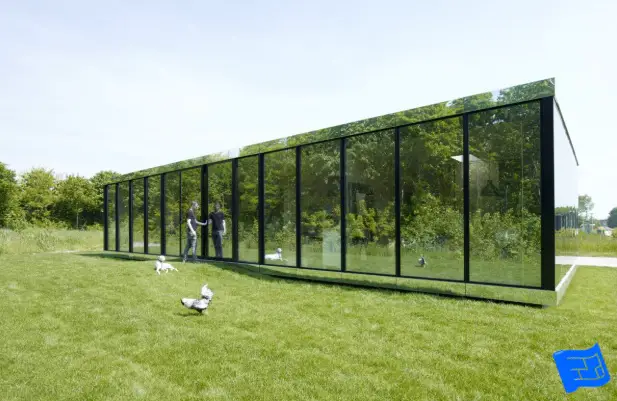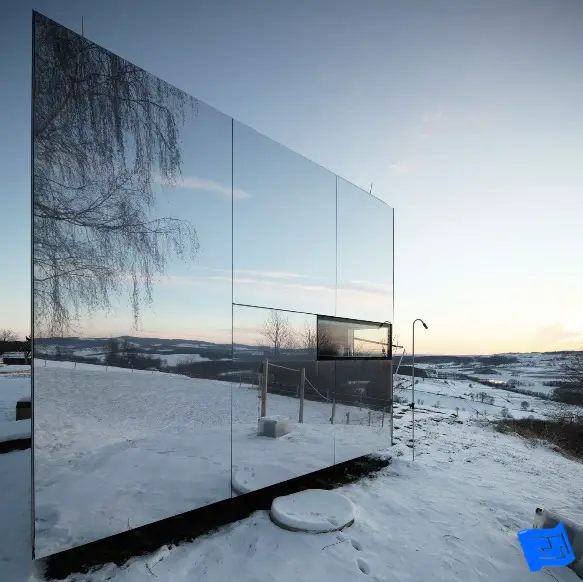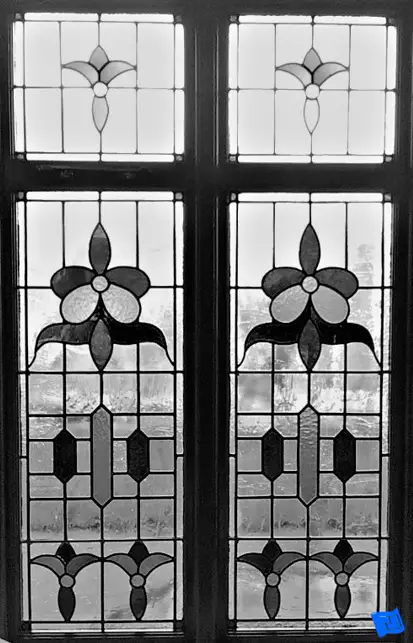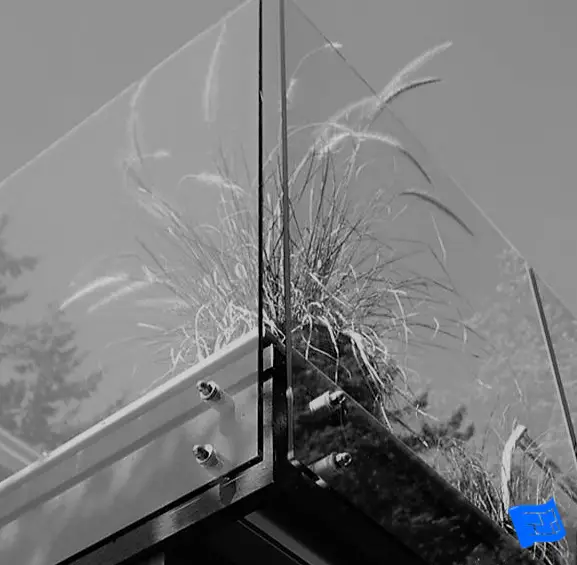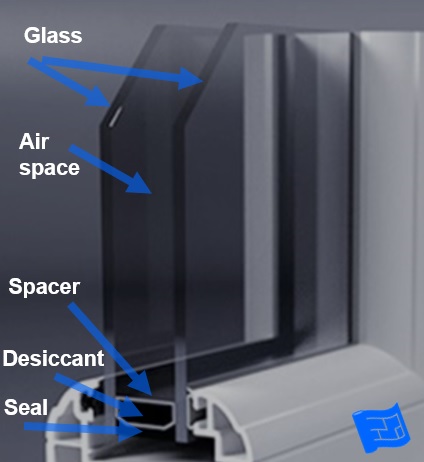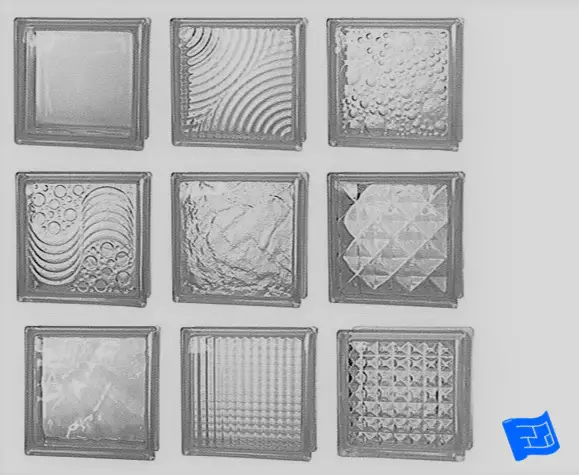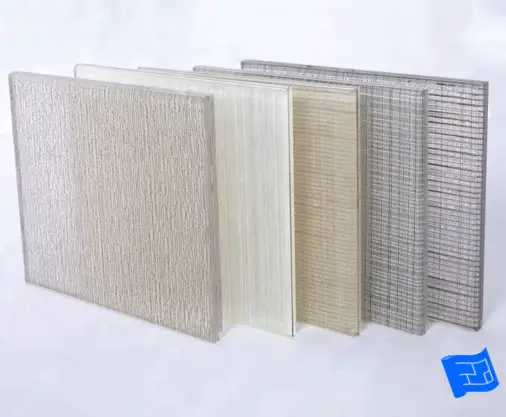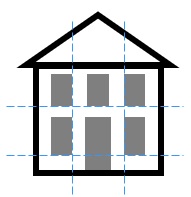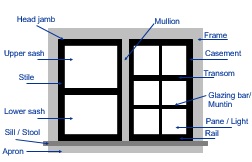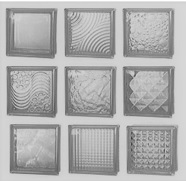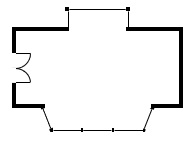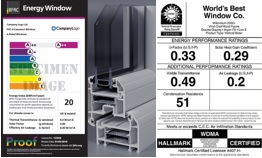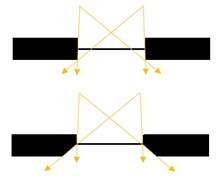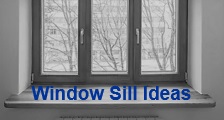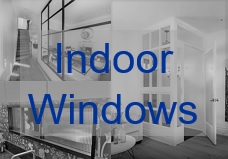- Home
- Window Design
- Types of Window Glass
Types of Window Glass
It's surprising how many different options there are for types of window glass.
There are plenty of aspects to consider when selecting your window glass (not necessarily in this order).
- Optical clarity / privacy
- Energy performance
- Safety
- Security
- Aesthetics
And the glass needs to work alongside the other parts of a window.
The priorities differ for different spaces in your home so it's important to consider each window in turn. You may well need several different types for different windows in your home.
For example you will need privacy in the bathrooms and perhaps your stairwell, downstairs windows need to be more secure than upstairs windows and perhaps you want to make a decorative statement with one of the windows that faces the street.
It's often possible to mix and match different characteristics in one window (more on this at the bottom of this page).
The following types of window glass feature on this page...
- Standard float glass
- Toughened glass / tempered glass
- Laminated glass
- Plastic glass
- Patterened glass
- Etched glass
- Mirrored glass
- Fire resistant glass
- Wire glass
- Low-emissivity glass / solar glass
- Colored / tinted glass
- Self-cleaning glass
- Electric / switchable / smart glass
- Noise reduction glass
- Double / triple glazing
- Glass block
- Window films
- Fabric glass
- Painted glass / verre eglomise
Standard float glass
Float glass is the glass that's used as the base for all other types of window glass. It's the lowest cost but has no features in terms of security, safety, energy, privacy or color.
It breaks pretty easily into dangerous shards and has poor energy characteristics when used as a single pane so it's well worth considering other types of glass for your home.
Standard float glass characteristics
Optical clarity / privacy
Good optical clarity, poor for privacy.
Energy performance
Poor for energy performance when used as single panes.
Safety
Poor for safety.
Security
Poor for security.
Aesthetics
No particular contribution to aesthetics.
Toughened glass / tempered glass
Toughened or tempered glass is stronger than ordinary types of window glass which makes it harder to break and therefore safer. The main safety feature of tempered glass is that when it breaks it shatters into lots of small pieces which won't give you large lacerations if you're unlucky enough to be in the way.
It's a good idea to get all your skylights made of the toughened or tempered type of window glass, if not laminated glass.
If your window is less than about 1 ft 6 ins (45 cm) most building codes require tempered glass for safety.
For those interested in the chemistry, toughened (or tempered) glass is created by carrying out an annealing process on standard glass.
Toughened / tempered glass characteristics
Optical clarity / privacy
Good optical clarity, poor for privacy.
Energy performance
Poor for energy performance when used as single panes.
Safety
Good for safety.
Security
Harder to break than standard glass but not as good as laminated glass.
Aesthetics
No particular contribution to aesthetics.
Laminated glass
Laminated glass is very safe and it's the best type of window glass when it comes to security because it's really hard to break through it. It's made of two thin sheets of glass glued together by a plastic layer that is flexible.
It takes a lot of time to break in through a laminated glass window. Once it breaks, the pieces are held in place by the plastic layer. Any intruder then has to break the glass then somehow get through the laminated layer. Not a quick task as you can see in the video below (after the characteristics table).
This is a great video that demonstrates how differently standard, toughened (or tempered) glass and laminated glass behave when they are broken.
Laminated glass characteristics
Optical clarity / privacy
Good optical clarity, poor for privacy.
Energy performance
Poor for energy performance when used as single panes.
Safety
Best for safety.
Security
Best for security.
Aesthetics
No particular contribution to aesthetics.

Fun facts about laminated glass
Fun facts about laminated glass:
- Your windshield (or windscreen) in your car is made of laminated glass.
- Bullet proof glass is made of laminated glass.
Plastic glass
This section refers to acrylic, plexiglass / perspex and there are other brand names out there for this type of window glass (sorry, plastic). Plastic glass is safe because once broken, any shards aren't as harmful as glass.
Modern plastic glass is optically clear, has good insulating properties and it's up to 10x more resistant to breaking than glass. It's used in some skylights and can be used to retrofit secondary glazing.
Plastic glass characteristics
Optical clarity / privacy
Good optical clarity, poor for privacy.
Energy performance
Poor for energy performance when used as single panes but better than a single pane of glass.
Safety
Good for safety.
Security
Good for security.
Aesthetics
No particular contribution to aesthetics.
Patterned glass
Patterned or obscured glass is created by giving one side of the glass a shape that distorts the direction of the light rays while still letting all the light through. This type of window glass is described as translucent.
The quality of light through translucent glass gives a wonderful glow with only ephemeral hints of what is going on behind the window, hence the privacy.
Here's a few examples of patterned types of window glass.
Patterned glass characteristics
Optical clarity / privacy
Good for privacy while letting plenty of light through.
Energy performance
Poor for energy performance when used as single panes.
Safety
Poor for safety unless also toughened or laminated.
Security
Poor for security unless also laminated.
Aesthetics
Different designs available.
Etched glass
Etched glass is where the surface of the glass remains flat but it is etched or ground to give it a cloudy appearance.
The whole pane can be etched and some window suppliers offer patterns if you want to make a bit more of a design statement.
The pictures below show a few possibilities for etched types of window glass. Essentially any design is possible. To maintain privacy make sure that the majority of the glass remains cloudy.
Another idea is to leave a small amount of clear glass around the edge of the pane.
Or get half of your pane etched to provide privacy where required, but let maximum light through where possible.
Etched glass characteristics
Optical clarity / privacy
Good for privacy while letting plenty of light through (slightly less light than patterned glass).
Energy performance
Poor for energy performance when used as single panes.
Safety
Poor for safety unless also toughened or laminated.
Security
Poor for security unless also laminated.
Aesthetics
Different designs available.
Mirrored glass
Mirrored glass may not seem an obvious choice for your home. We're more used to seeing it in the interview rooms on our favorite crime dramas or on sky scrapers.
Mirrored glass is great if you need privacy and still want to be able to see the outside clearly. However, there will be a slight degree of light loss because mirrored glass tends to have a slight tint to it.
Mirrored glass also helps to keep the internal temperature down as it will reflect a certain amount of the sunlight.
Remember that with this type of window glass you'll still need curtains or some other window treatment because at night when light levels inside are greater than the outside, the mirror effect is lost.
Your window supplier may have different colors of mirror glass available.
Mirrored glass can be used as a real feature if it's used on the whole home.
Here are two of my favorite mirror houses....
Mirrored glass characteristics
Optical clarity / privacy
Good for privacy while letting plenty of light through. Optical clarity from the inside slightly less than clear glass. Need curtains for night time.
Energy performance
Poor for energy performance when used as single panes.
Safety
Poor for safety unless also toughened or laminated.
Security
Poor for security unless also laminated.
Aesthetics
Different color mirror available and can create interesting effects when using reflecting qualities as part of the design for the outside of the home.
Fire resistant glass
Fire resistant glass is only required in residential settings when a larger than usual proportion of the the external walls is constructed with glass. If you imagine a room with a high ceiling height with glass walls on two sides - then fire resistant glass might be required.
Fire resistant glass means that the glass will stay intact in case of fire for longer than normal glass and will also keep the temperature on the other side of the glass lower than normal glass.
Fire resistant glass characteristics
Optical clarity / privacy
Good optical clarity, poor for privacy.
Energy performance
Poor for energy performance when used as single panes.
Safety
Poor for safety (apart from the fact that it's fire more resistant) unless also toughened or laminated.
Security
Poor for security unless also laminated.
Aesthetics
No particular contribution to aesthetics.
Wire glass
You usually see wire glass in large buildings such as schools and hospitals. It can be useful in a residential setting when you want fire resistance and the appearance isn't important. I have seen it used in sheds and other outdoor utility buildings.
The wire makes it safer and somewhat more secure in terms of fire resistance and ease of breaking.
It's available in both clear and patterned glass.
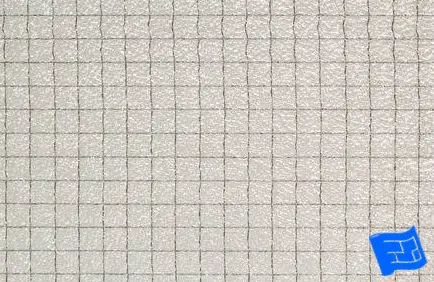 Wire glass is fire resistant and can be useful in garden buildings or utility areas where appearance is less important
Wire glass is fire resistant and can be useful in garden buildings or utility areas where appearance is less importantWire glass characteristics
Optical clarity / privacy
Available in both clear and patterned so the choice is yours.
Energy performance
Poor for energy performance when used as single panes.
Safety
Good for safety (not as good as toughened / laminated).
Security
Good for security (not as good as laminated).
Aesthetics
Not aesthetically pleasing so best used in utility spaces in residential settings.
Low emissivity and solar control glass
Low emissivity (or low-E) glass controls solar gain by reducing the transmission of infrared radiation (heat) while still allowing most of the light to pass through. It also works in reverse, so in winter the heat is kept inside your home.
Consider specifying low emissivity glass in large areas of glazing in the following areas:
- Conservatories (a room with glass walls and glass roof).
- Large areas of glass that face the sun. This depends on the hemisphere you're living in (south facing for northern hemisphere, north facing for southern hemisphere). Read more about orientation towards the sun.
This type of window glass is often tinted to be sure to see a good sized sample before you order. Also, I've heard that it may cause disruption in cell phone reception. Check with your window supplier.

Install your low-E glass the right way round.
It's important that low emissivity glass is installed the right way round. The glass should have a label which indicates the correct side to have on the inside or outside.
Low emissivity glass characteristics
Optical clarity / privacy
Film used may include a tint.
Energy performance
Improved energy performance.
Safety
Poor for safety unless also toughened or laminated.
Security
Poor for security unless also laminated.
Aesthetics
Different degrees of tint may be available.
Colored and tinted glass
Colored or tinted glass can be used for a whole pane but is more commonly used in stained glass windows. Stained glass windows add to the aesthetic of your home and are also another option to add privacy. Stained glass panels can sometimes be installed as an internal window.
Some window suppliers have off the shelf stained glass designs you can choose from. If you want to have a design made be sure to ask your window supplier how this might be possible.
Colored glass characteristics
Optical clarity / privacy
Colored glass lets through less light and colors are distorted.
Energy performance
Poor energy performance when used as a single pane.
Safety
Poor for safety unless also toughened or laminated.
Security
Poor for security unless also laminated.
Aesthetics
Lots of possibilities!
Self-cleaning glass
Self cleaning glass - sounds like science fiction but it's really truly available!! A coating of titanium dioxide is applied to the glass. Self cleaning glass has a blue tinge to it so it works best when the whole area receives direct sunlight.
Balconies are an ideal setting to use self-cleaning glass.
I found this great article on self-cleaning windows which is well worth a read if you're considering self cleaning for one of the types of window glass for your home.

Window cleaning tip
To make the windows in your home easier to clean, see if your window supplier can offer a reverse opening feature so that you can reach the outside of the window from the inside. This is especially useful on upper levels.
Self-cleaning glass characteristics
Optical clarity / privacy
Has a blue tinge
Energy performance
Poor for energy performance when used as single panes.
Safety
Poor for safety unless also toughened or laminated.
Security
Poor for security unless also laminated.
Aesthetics
Clean windows always look better than dirty ones!
Electric Glass / Switchable smart glass
Electric glass or switchable smart glass refers to panes of glass that can change properties at the touch of a button, or on movement sensors.
It can be used in both internal and external applications. There are a few different types available:
- Privacy glass where the glass changes from clear to translucent.
- Solar glass where the solar control qualities (the low-emissivity) qualities can be turned on and off. The glass always appears clear.
- Blackout glass where the glass changes from clear to totally opaque.
Noise reduction glass
There is no special glass as such that reduces noise. Noise reduction in windows is achieved by using double or triple glazing (see below). The gas filled space in between each pane of glass acts as a sound break.
Double and triple glazing
Double and triple glazing refers to using two or three panes of glass respectively in the same window area rather than a special type of window glass.
The area between the two (or three) panes of glass is sealed and the air replaced with gas (usually argon). The argon gas creates a heat and sound break. The spacer contains a desiccant which prevents any moisture build up.
For more on the performance of windows take a look at the window efficiency page.

Top tip for ordering double glazing windows
In the diagram above you can see the spacer. This tip concerns spacers....
- Find out what color your spacers are going to be and make sure you're happy with it. I've seen black, white and silver spacers. You can imagine that a white spacer would look odd if the window frames are black so bear the color of the spacer in mind.
- If your window design includes several of panes you'll need to specify if you want separate panes and spacers, or a single pane with the design being marked out by the window frame material (wood / pvc / metal) on the surface of both sides of the glazing. It's less expensive to have one large pane with the design only on the surface.
Secondary glazing
If you aren't planning to replace your single glazed windows then secondary glazing may be an option for you. This is where an extra pane of glass (basically a second window) is installed on the inside of the existing window.
Secondary glazing is much more affordable than double glazing and it can be a DIY job.
Double / triple glazing characteristics
Optical clarity / privacy
Double glazing has no difference in optical clarity than single glazing (not that's detectable by the human eye). Triple glazing can decrease light levels slightly and have slight distortions.
Energy performance
Best for energy performance. Work with your window supplier to consider the U-values and different elevations of your home to decide if triple glazing is warranted. (see window efficiency page)
Safety
Two or three panes mean that one of the panes can be tempered and one can be laminated making double / triple glazing very safe.
Security
Two or three panes mean that one of the panes can be lamainted making double / triple glazing very safe.
Aesthetics
No particular contribution to aesthetics.

Mixing features in types of window glass
If you like the features of more than one of the types of window glass above it's usually possible to mix several features in one window. This can be achieved by:
- Getting double or triple glazing and including a different type of window glass in each of the panes.
- Getting laminated glass (which gives you the laminated glass feature) and including different types of window glass in each of the layers that make up the laminated glass.
Ask your window supplier about mixing features.
Glass block
Last but not least of the types of window glass is glass block. I've left it until last because it's more of a glass wall than a window.
Glass blocks are made by fusing together two halves to create a vacuum inside so they're effectively double glazed. This gives glass block the insulation qualities equivalent to a double glazed window. They're also hard to break which makes them secure and safe. Of course a glass block wall does not open so it can't be used as a fire escape route.
They come in a number of finishes including totally clear. Similar to normal glass, the patterned versions provide privacy and still let the light through. They're suitable for both internal and external use.
Glass blocks are assembled like a wall and the mortar lines create louvers which create shade in the summer when the sun is high and let the light through when the sun is low in the winter.
If you're thinking about using glass block, some suppliers supply the wall already mortared together.
Glass block characteristics
Optical clarity / privacy
Poor optical clarity, even for clear glass blocks.
Energy performance
Good energy performance.
Safety
Good for safety.
Security
Good for security.
Aesthetics
Looks fabulous in the right settings, or in utility areas where appearances are less relevant.
Window films
For nearly every type of glass there is a window film that does the same job. For example:
- Obscuring window film
- Mirror window film
- Safety window film
- Colored glass film
- UV / solar window film
This is really useful if you're remodeling and you don't necessarily want to replace your windows.

Tips for installing window film
I've installed window film several times (it's pretty easy to get a good result).
- Measure accurately. If you want to cover the whole of the glass area, leave about 2mm wiggle room in each direction. If there's excess window film which means that the sheet cannot lie entirely flat because it's squashed up onto the frame of the window it leaves a line of air bubble around the edge. You won't notice the 2mm wiggle room but you will definitely notice the circumference of air bubble.
Another way of doing it is measuring the film slightly oversized, then cutting around the edge of the window frame with a utility knife once the film is in place. Personally I find the first method easier. - Cut accurately. Ideally use a cutting board with a steel ruler and craft knife, otherwise use scissors accurately.
- Sometimes the companies that supply the films also sell special gadgets for wetting the window and getting the air bubbles out. These aren't necessary. Use a credit card or similar plastic card to get all the air bubbles out and a regular sponge or spray bottle will do to apply the water before you apply the film.
Indoor decorative glass
Fabric glass
Fabric glass is where a piece of fabric (usually see through fabric) is sandwiched between two layers of glass.
This type of window glass is used more in indoor window and glass applications that for windows to the outside.
Painted glass / verre eglomise
Put simply painted glass or verre eglomise this is where a design is painted onto the glass.
You could use a plain color as a backsplash or a more elaborate design.
I hope you've found this page on types of window glass useful. Now take a look at the other pages on window design.

